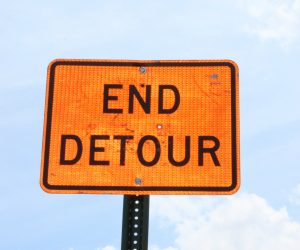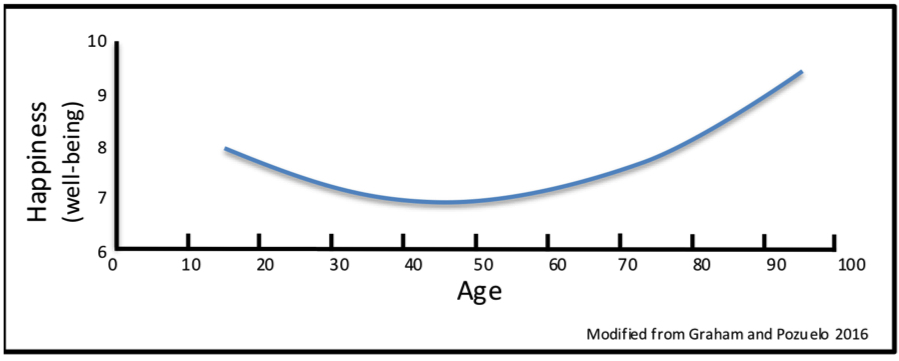 I spent much of my adult life living under the spell of a deceit. I thought that I was being myself, living my truth, living life on my terms …
I spent much of my adult life living under the spell of a deceit. I thought that I was being myself, living my truth, living life on my terms …
The adventure begins
When I was in my mid-twenties I packed all of my worldly possessions into the back of a Toyota pickup truck and headed to Alaska in search of my fortune. I didn’t have a job and I only knew two people who lived there, but I had $800 to my name and all the time in the world. I was a free agent making my own decisions and carving out a life for myself through adventure and a trust that things would work out because the Universe always provides. It was intended to be a journey of discovery of self as much as exploration of wild new lands. And initially it was …
Fast-forward 15 years and I’m married with two kids, an Associate Vice-President rising up the ladder at a high-ranking national engineering firm, making a six-figure salary, and sharing time between a lovely home and two modest remote vacation properties. For the most part I was content with life. And why shouldn’t I be? I was creating the American Dream, my way.
But as I was rounding the bend of 40, something inside wasn’t quite right. I had a lot of freedom in my work. I was managing multi-million-dollar projects for multi-national clients and was considered an expert in my chosen field. I was continually given the keys to the kingdom and could have kept right on climbing as high as I wanted, but something wasn’t sitting well.
The midlife dip really sets in
On the cusp of midlife it was like there was an internal burr or a disquieting feeling that just wouldn’t go away. Sometimes it was an irritant and sometimes just a sense of emptiness or a hole.
When I’d ask myself the question, “Who AM I?” I couldn’t really answer. And worse, when I looked up the ladder at who I would need to be at the top, the single question that crossed my lips was, “Who IS that?”
I had noticed that my life was taking on a life of its own. I began not recognizing myself and noticed that much of my life was spent just going through the motions of what a life could be, not what it should be for me. It was as though I had become a character in someone else’s story.
It was someone else’s story: my wife’s, my boss’, my clients’, my banks, and the list went on.
Where once there had been desire for adventure and exploration, a settling for safety and consistency had slowly crept in.
Where once there had been desire to know myself and to live at my growth edge, a settling for stagnation and living up to others’ expectations had slowly crept in.
It wasn’t as though my work sucked or my marriage was in shambles or that my health was in the toilet. But clearly something wasn’t right and I sensed that if I didn’t attend to it I would have major regrets later in life. If I didn’t course correct, then one or all of those aspects of my life would unravel in the coming years.
Enough is enough
One day while on my commute I realized I’d had enough.
Enough of the settling
Enough of living someone else’s blue print for a life
Enough of being inauthentic with myself and with others
Enough of not living at MY growth edge and living MY purpose in the world.
Even though I didn’t have a clear idea of WHAT my purpose was, I knew that I wasn’t living it and so set out once again to carve out a life for myself through adventure and a trust that things would work out because the Universe always provides.
It would likely not be easy, most things of real value rarely are. It would not be as simple as packing up all my belongings into the back of a pickup truck and hitting the road.
Reality was that living someone else’s life wasn’t easy either. In fact, it was really freaking hard and it took a lot of energy to maintain the façade.
Seven years later after much internal and external exploration, and hard work, I am clear on my values, clear on my life’s purpose, and I am doing work that I absolutely love.
My relationship with my wife is stronger than it’s ever been in our 17 years of marriage.
I’m as fit and healthy in my late 40s as I was in my late 20s.
I have also created an incredible network of relationships that feed my soul, keep me connected, and continually push me to my growth edge.
How did I do all this?
Slowly and thoughtfully,
With care for myself and for others,
By changing paths without burning bridges,
By keeping the long-term vision without holding the outcome of that vision too tightly.
Can I get some answers please?
There were four things I learned in the process that were critical to my success.
Be curious about YOU – Know thyself. You need to be an expert on YOU. If you want freedom you have to understand your intrinsic motivators, what makes you tick and gets your juices flowing. It’s critical to identify what has real value and what is a must-have and cannot be compromised. Also, get crystal clear on what is ego and what is soul and don’t confuse the two.
Be bold – Leap and the net will appear. You have to get to know your shadows and what scares the crap out of you and head in that direction. Be ready for changes within you to be uncomfortable and get really comfortable with that change. It’s a learning edge for a reason; growth occurs where the known and unknown intersect. Learn to trust your inner voice of “Know thyself.”
Get good at relationships – Treat others as you would have them treat you. Acquire tools to help you communicate clear boundaries and what you need, without making what others want wrong for them. Getting good at relationships requires that you get good at being compassionate and to practice the rarely used art of forgiveness – on yourself and with others.
Be relentless – Show up every day. If it’s hard, show up. If it’s uncomfortable, show up. If it’s joyous, show up. If it’s boring as hell, show up. It’s only a battle if you want it to be; your mindset determines your experience. It’s your life, show up every day willing to take the next step, and then the next, into the life that’s waiting for you to simply show up.
 I’ve gone and done it again … I thought by now, at midlife, that I’d kicked the bad habit of saying “Yes.” I thought that I’d actually reached the point of finding balance between the work I love and the life I love. Hell, balance is what lifestyle living is all about right?!
I’ve gone and done it again … I thought by now, at midlife, that I’d kicked the bad habit of saying “Yes.” I thought that I’d actually reached the point of finding balance between the work I love and the life I love. Hell, balance is what lifestyle living is all about right?!

 How we can use our multiple brains to make difficult decisions
How we can use our multiple brains to make difficult decisions I spent much of my adult life living under the spell of a deceit. I thought that I was being myself, living my truth, living life on my terms …
I spent much of my adult life living under the spell of a deceit. I thought that I was being myself, living my truth, living life on my terms … Before I became a coach for men in midlife I never gave much thought to my values. Don’t worry, my internal conscience, Jiminy Cricket, has kept me morally on the straight and narrow. By values I don’t mean morals or virtues. I’m speaking here about the deep-seated motivators that make us unique and who we are at our core as men.
Before I became a coach for men in midlife I never gave much thought to my values. Don’t worry, my internal conscience, Jiminy Cricket, has kept me morally on the straight and narrow. By values I don’t mean morals or virtues. I’m speaking here about the deep-seated motivators that make us unique and who we are at our core as men. The myth that is the midlife crisis may be mortally wounded by current research. However there’s ample evidence of a midlife dip that’s more than just a pothole in the road of life.
The myth that is the midlife crisis may be mortally wounded by current research. However there’s ample evidence of a midlife dip that’s more than just a pothole in the road of life.

Recent Comments